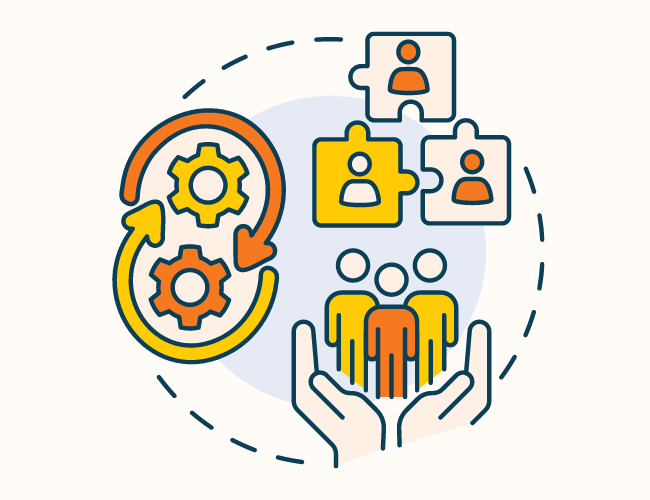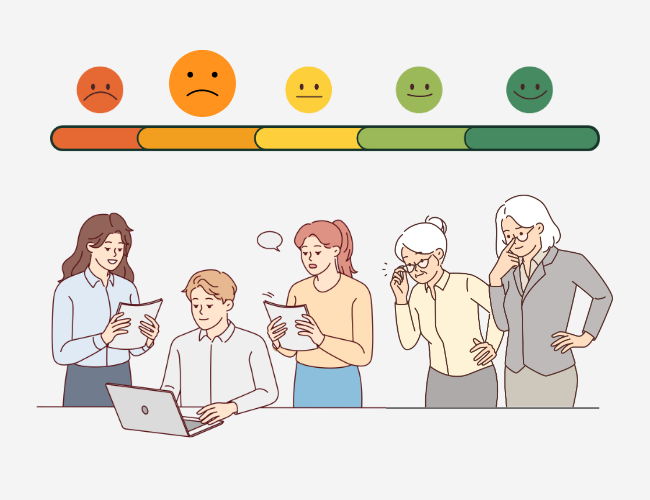Welcome to the second installment of our “Insights for Success” blog series! We’ve consolidated the key takeaways from our latest webinar on DEIB and employee wellness. Now, we’re bringing all these valuable insights to you in one comprehensive and accessible location. Enjoy!
In our recent webinar, “Bridging The Gap: Navigating The Intersection Between DEIB & Employee Well-Being”, Wellable partnered with Orange Grove Consulting to explore the power of harmonizing DEIB and employee well-being initiatives and discuss strategies to create an inclusive and thriving workplace.
Experts Nick Patel, Founder and CEO at Wellable, and Daphney Valcinor, Senior Facilitator and Consultant at Orange Grove Consulting, tackled various topics, from workplace barriers to employee health to the development of a DEIB-friendly wellness program.
Since not everyone could attend the live session, we’re bringing the insights to you. Curious about how to cultivate a psychologically safe workplace? Or about how to make your benefits packages truly inclusive? We’ve got that covered, and more.
Pressed for time? Here’s a quick summary…
- Creating a psychologically safe workplace enables employees to speak up when they encounter a microaggression without fear of reprisal.
- Integrating DEIB into wellness initiatives provides all populations with an equal opportunity to thrive, benefiting the well-being of employees and contributing to organizational success.
-
This includes ensuring benefits, wellness providers, and promotional materials are diverse and inclusive while having a clear understanding of your organization’s needs and how DEIB impacts success.
Importance Of DEIB In Workplace Culture & Wellness
When we’re thinking about well-being and DEIB, it’s not only the physical, but it’s looking at the feeling of being disconnected, feeling unsupported, and how that can have an impact in how we bring ourselves to the workplace to be our most productive and efficient selves.
Daphney Valcinor, Senior Facilitator and Consultant at Orange Grove Consulting
Diversity, equity, inclusion, and belonging (DEIB) are essential to cultivating workplace wellness, which includes physical, mental, and social well-being. Organizations must recognize the profound impact that subtle microaggressions have on workplace well-being.
Microaggressions can cause psychological stress, depression, substance abuse, high blood pressure, and sleeping problems. Many refuse to speak up when they encounter a microaggression, whether intentional or unintentional, due to fears of:
- hurting career advancement
- being disruptive
- being ridiculed, belittled, or punished
- the problem addressed being minimized, or
- the risks outweighing the vulnerabilities.
To combat this, it’s vital to create a psychologically safe workplace in which employees feel secure speaking up. DEIB is at the forefront of this environment, where individuals are empowered to bring up issues, openly admit mistakes without fear of reprisal, feel comfortable being vulnerable, and are motivated to continuously learn. This acceptance and accountability create a safe workplace and enhances the collective well-being of the workforce.
Integrating DEIB Into Wellness Initiatives
While wellness programs and DEIB initiatives are often disconnected, there are several steps organizations can take to ensure their wellness efforts provide all populations with an equal opportunity to thrive.

1. Define What Success Looks Like
Organizations must have a clear understanding of diversity, equity, inclusion, and belonging and how these concepts apply to organizational success. Then, they can determine which groups or communities they want to target with their efforts and how they can expand traditional DEIB focus areas to include new groups or experiences.
2. Provide Inclusive & Accessible Benefits
Ensuring equal access to benefits is essential for demonstrating DEIB commitment. This begins with identifying benefits that assist underrepresented groups to structure a fully inclusive benefits package. Then, organizations must ensure all employees can benefit from resources easily and to the same degree by addressing affordability, education and awareness, and policy technicalities.
3. Run Holistic Programs
When you start building these holistic programs, it’s thinking about the diverse dimensions you want to touch but also the way you touch that.
Nick Patel, Founder & CEO of Wellable
Many wellness programs focus solely on physical health and disregard other facets of wellness. While physical well-being is important, holistic wellness programs should also address mental, financial, social, occupational, spiritual, intellectual, and financial well-being. Embracing various media and educational formats ensures everyone can find value in the resources provided.
4. Offer Diverse Wellness Providers
Diverse populations may have different experiences with wellness providers and may benefit from seeing professionals who share their identities or background. Including a wide range of providers in your wellness program ensures that the unique needs of underrepresented groups are understood and catered to.
5. Utilize Inclusive Promotional Materials
To weave DEIB into their internal communications, companies must focus on two key areas: images and language. Images must include a diverse range of individuals without reinforcing harmful stereotypes. Language must be inclusive and carefully chosen, especially as it pertains to marginalized or disenfranchised groups.
6. Showcase Success Stories

After infusing DEIB into your wellness program to benefit the diverse populations within your organization, share success stories from underrepresented groups to inspire and motivate others to participate in wellness programs.
7. Learn About Your Organization’s Unique DEIB Needs
When we can create an environment where we want to solve issues, then people are more likely to give candid feedback to share perspective about what is not working versus ruminating status quo.
Daphney Valcinor, Senior Facilitator and Consultant at Orange Grove Consulting
While general steps can be taken, each organization has its own specific DEIB challenges and requirements. Conducting surveys, holding town halls, and designating DEIB officers or experts can help to gather feedback and insights from employees about their wellness needs.
Learn more about building a DEIB-friendly wellness program.
The Transformative Power Of A DEIB-Driven Culture
Integrating DEIB initiatives into wellness programs ensures equal opportunity for all employees to thrive. By intentionally infusing DEIB into wellness efforts, organizations create an inclusive environment where every individual can access and benefit from wellness resources and support.
DEIB initiatives and wellness programs are not only essential for the well-being of employees but also contribute to the overall success of the organization. When employees feel valued, included, and supported, their engagement and productivity increase, leading to improved performance and organizational outcomes.

Fireside Chat Recap
Q: What are some often overlooked aspects of DEIB that significantly influence interpersonal dynamics and contribute to a psychologically safe work environment?
Daphney Valcinor: “Some of the things we can do immediately is to really understand people’s experiences, understanding unspoken norms, and thinking about, do people feel unsafe or uncomfortable? Because those are the impacts of psychological unsafety.
Leadership, we play a big role in setting the tone of a psychologically safe workplace…the ways in which we reflect the values of our organization and our behaviors.
One thing that really minimizes intentions is when there is misalignment with cultural norms, where we say one thing but do another thing and lack accountability…those mistakes often have a big impact in how safe people feel.”
Q: Can you provide any examples of specific wellness initiatives or programs that have successfully promoted inclusivity and have catered to the diverse needs of employees in your experience?
Nick Patel: “Ten years ago, when I started Wellable, diversity, equity, and inclusion wasn’t a concept most companies talked about generally, and many companies are still using the same resources they had back then…even though those resources may be instructional and great content, they were not created in the context of current DEIB goals, so for most companies, before adding diversity in, I would go review everything you’ve done in the past.”
Q: Can you provide examples, or maybe your favorite example, of innovative strategies or initiatives that have successfully engrained DEIB into an organization’s culture leading to positive outcomes for both employees and the organization as a whole?
Daphney Valcinor: “Even though people don’t know where to begin, they’ll start by understanding their current state. That can be focus group, cultural assessment, really trying to understand what people’s experiences are, and how can we leverage those experiences to create a work environment where people want to be.”
Q: In terms of remote and hybrid work, what strategies can leaders employ to advocate for wellness while promoting an inclusive environment?
Nick Patel: “There’s no right answer, but it’s a lot of testing. It goes back to offering resources, understanding resources should be available to everyone to the extent they can be, but it does not need to be equally accessed by everyone. One of the best ways to accelerate anything successfully is opening avenues for conversation, dialogue, and feedback.”












